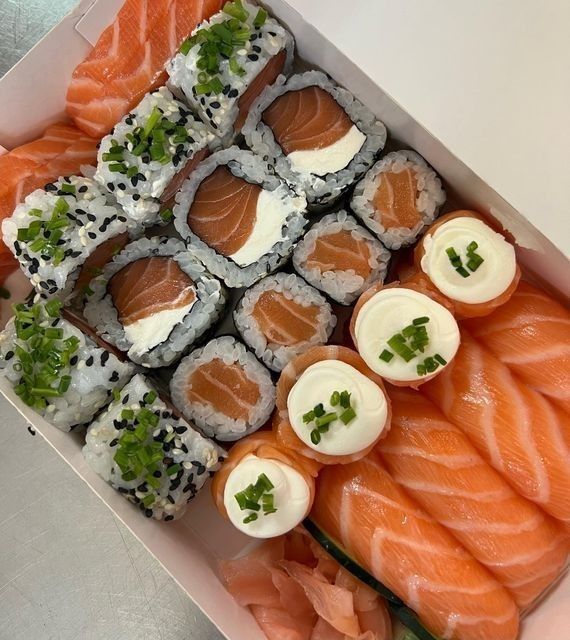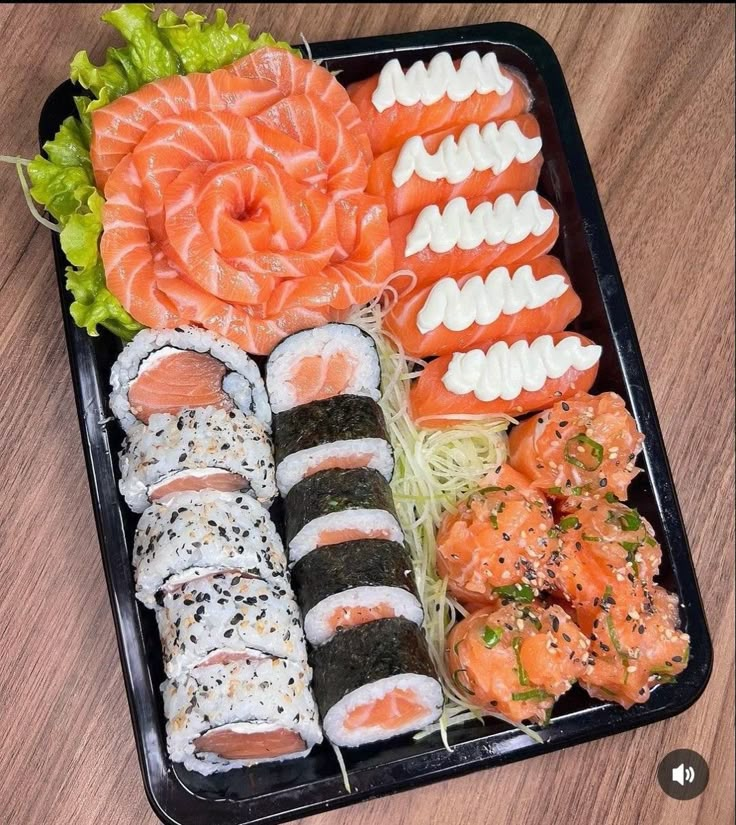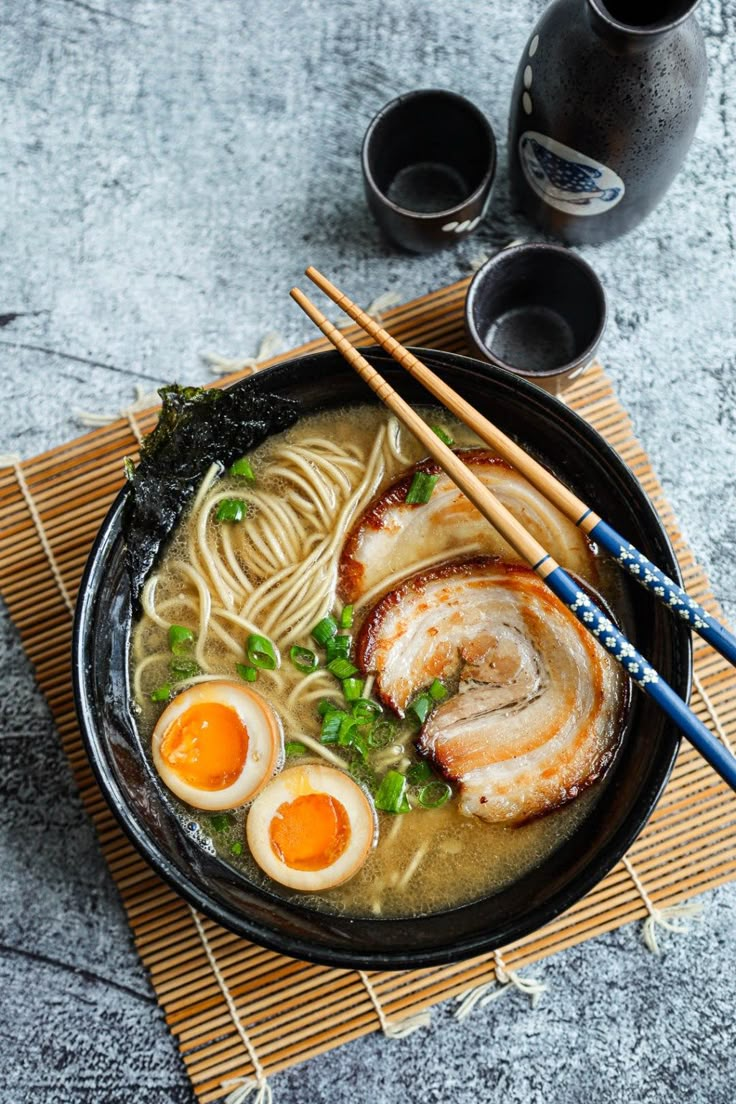A Culinary Odyssey: 10 Foods YOU MUST Try in Japan
Japan. The Land of the Rising Sun, of ancient temples and futuristic cityscapes, of serene gardens and bustling markets. But for many, Japan is synonymous with one thing above all else: food. Japanese cuisine, or washoku, is a UNESCO Intangible Cultural Heritage, a testament to its artistry, balance, and deep connection to nature and seasons. To visit Japan and not embark on a gastronomic adventure is to miss out on a fundamental part of its soul.
While the options are dizzyingly vast, certain dishes stand as pillars of Japanese culinary identity. Prepare your chopsticks (and your appetite!) as we dive into 10 foods you absolutely must try on your journey through Japan.

1. Sushi & Sashimi: The Art of Raw Perfection

No list of Japanese food can begin anywhere else. Sushi and sashimi are perhaps Japan’s most famous culinary exports, but experiencing them in their homeland is a revelation.
-
What it is:Sushi: Vinegared rice (shari) combined with other ingredients (neta), most commonly raw fish or seafood. Popular forms include nigiri (a slice of topping over a mound of rice), maki (rolled in seaweed), gunkan (seaweed “battleship” cups holding softer toppings), and temaki (hand-rolled cones).
-
-
Sashimi: Expertly sliced raw fish or seafood served without rice, typically accompanied by soy sauce, wasabi, and pickled ginger (gari).
-
-
Why it’s a must-try: The emphasis here is on freshness and quality. The fish, often sourced daily from local markets, is handled with reverence. A skilled sushi chef (itamae) doesn’t just assemble ingredients; they perform an art, considering the cut, texture, and temperature of each component. The subtle sweetness of the perfectly seasoned rice, the clean taste of the fish, the delicate kick of wasabi – it’s a symphony of flavors.
-
Where to try it:
-
High-end Sushi-ya: For an omakase (chef’s choice) experience, often with counter seating where you can watch the masters at work. Be prepared to splurge.
-
Kaiten-zushi (Conveyor Belt Sushi): A fun, accessible, and budget-friendly option. Grab plates as they pass by.
-
Local Fish Markets: Some markets, like Tokyo’s Toyosu (formerly Tsukiji), have restaurants serving incredibly fresh catches.
-
-
Pro-Tip: When eating nigiri, dip the fish side (not the rice) lightly into soy sauce. Eat it in one bite if possible. Gari is meant to cleanse the palate between different types of fish, not to be eaten with the sushi itself
2. Ramen: The Soul-Warming Noodle Soup

More than just a quick meal, ramen is a cultural phenomenon, an object of obsession, and a deeply satisfying comfort food.
-
What it is: A noodle soup dish consisting of Chinese-style wheat noodles served in a rich broth, flavored with soy sauce or miso, and topped with ingredients like sliced pork (chashu), dried seaweed (nori), menma (bamboo shoots), and a soft-boiled egg (ajitama).
-
Why it’s a must-try: The complexity and diversity of ramen are astonishing. Each region, and often each shop, has its own unique style. The four main broth types are:
-
Shio (Salt): Light, clear, and delicate.
-
Shoyu (Soy Sauce): Clear brown, savory, and tangy.
-
Miso (Fermented Soybean Paste): Rich, nutty, and complex, popular in Hokkaido.
-
Tonkotsu (Pork Bone): Creamy, opaque, and intensely flavorful from hours of simmering pork bones, a Kyushu specialty.
The noodles themselves vary in thickness, texture, and curl. Finding your perfect bowl is a delicious quest.
-
-
Where to try it:
-
Ramen-ya (Specialty Ramen Shops): These are everywhere, from humble counters to bustling establishments. Look for queues – they often indicate a popular spot.
-
“Ramen Alleys” or “Ramen Streets”: Found in many cities (like Sapporo Ramen Yokocho or Tokyo Ramen Street), these offer a concentration of different ramen styles.
-
-
Pro-Tip: Slurping your noodles is not only acceptable but encouraged! It helps cool the hot noodles and enhances the flavor. Don’t be shy.
3. Tempura: The Art of Light and Crispy Frying
Forget any heavy, greasy fried food you’ve had before. True Japanese tempura is an ethereal experience.
-
What it is: Seafood (commonly shrimp, fish, squid) and seasonal vegetables lightly battered and deep-fried to a perfect crispness. The batter is a simple mix of flour, egg, and ice-cold water, crucial for its delicate texture.
-
Why it’s a must-try: The magic of tempura lies in its feather-light, non-greasy batter that encases perfectly cooked ingredients, sealing in their natural flavors and moisture. The chef’s skill is paramount, controlling oil temperature and cooking time precisely. It’s often served with tentsuyu (a dipping sauce made from dashi, mirin, and soy sauce) with grated daikon radish, or simply with a pinch of salt.
-
Where to try it:
-
Tempura Specialty Restaurants: Often with counter seating where you can watch the chef fry each piece to order.
-
Udon/Soba Shops: Tempura is a common and delicious topping for noodle dishes.
-
Tendon (Tempura Donburi) Shops: Serving tempura over a bowl of rice.
-
-
Pro-Tip: Eat tempura immediately after it’s served for maximum crispness. When dipping in tentsuyu, dip lightly to preserve the delicate crunch.
4. Udon & Soba: The Versatile Noodle Staples
While ramen often steals the international spotlight, udon and soba are equally beloved and offer a different kind of noodle satisfaction.
-
What it is:
-
Udon: Thick, chewy wheat flour noodles.
-
Soba: Thin noodles made from buckwheat flour, often with some wheat flour added. They can have a nutty, earthy flavor.
-
-
Why it’s a must-try: Both udon and soba are incredibly versatile. They can be served hot in a flavorful dashi-based broth with various toppings (meat, egg, vegetables, tempura – this is kake udon/soba) or chilled and served with a dipping sauce (tsuyu) on the side (zaru udon/soba or mori soba). The simplicity of a well-made bowl of udon or soba, highlighting the texture of the noodles and the umami of the broth or sauce, is deeply satisfying. Soba is also considered a healthier option due to the buckwheat.
-
Where to try it:
-
Udon-ya and Soba-ya (Specialty Noodle Shops): These range from standing-only quick-eats at train stations to more refined establishments.
-
Ryokans (Traditional Inns) and Teishoku (Set Meal) Restaurants: Often feature these noodles.
-
-
Pro-Tip: When eating cold soba or udon, take a small amount of noodles, dip them about halfway into the tsuyu, and slurp. You can add condiments like wasabi or spring onions to your dipping sauce. After finishing cold soba, many shops offer soba-yu (the hot water the soba was cooked in) to mix with your leftover tsuyu for a warming drink.
5. Okonomiyaki: The Savory “As You Like It” Pancake
Fun to eat and often fun to make, okonomiyaki is Japanese comfort food at its most customizable.
-
What it is: A savory pancake containing a variety of ingredients. The name roughly translates to “grill what you like.” A batter of flour, eggs, and grated yam is mixed with shredded cabbage and other chosen fillings like meat (pork belly is common), seafood, and vegetables. It’s cooked on a hot griddle (teppan), then topped with okonomiyaki sauce (a sweet and savory brown sauce), Japanese mayonnaise, dried seaweed flakes (aonori), and bonito flakes (katsuobushi).
-
Why it’s a must-try: Okonomiyaki is a hearty, flavorful, and incredibly social dish. There are two main regional styles:
-
Osaka-style (Kansai-style): All ingredients are mixed into the batter before grilling.
-
Hiroshima-style: Ingredients are layered rather than mixed. It typically includes a base of fried noodles (yakisoba) and a fried egg.
Many restaurants let you cook your own at a table-inset griddle, adding to the interactive experience.
-
-
Where to try it:
-
Okonomiyaki Restaurants: Often specializing in either Osaka or Hiroshima style, or offering both.
-
Food Stalls at Festivals: A popular street food.
-
-
Pro-Tip: The bonito flakes on top will “dance” from the heat – this is normal and part of the fun! Use the small spatulas (hera or kote) to cut and serve, or sometimes to eat directly from the griddle.
6. Takoyaki: The Addictive Octopus Balls
A quintessential Japanese street food, especially famous from Osaka, takoyaki are dangerously delicious.
-
What it is: Small, ball-shaped snacks made from a wheat flour-based batter cooked in a special molded pan. Each ball is filled with minced or diced octopus (tako), tempura scraps (tenkasu), pickled ginger (beni shoga), and green onion. They are typically brushed with takoyaki sauce (similar to okonomiyaki sauce), drizzled with mayonnaise, and sprinkled with aonori and katsuobushi.
-
Why it’s a must-try: The contrast of the crispy exterior and the gooey, molten-hot interior, combined with the chewy octopus and savory toppings, is incredibly addictive. Watching vendors expertly flip the balls with picks is a mesmerizing sight. They are the perfect on-the-go snack.
-
Where to try it:
-
Street Food Stalls (Yatai): Especially prominent in Osaka’s Dotonbori area, but found throughout Japan at festivals and in shopping arcades.
-
Specialty Takoyaki Shops: Some offering various flavor twists.
-
-
Pro-Tip: Be careful! Takoyaki are served piping hot and the inside can be like lava. Poke a hole in them to let some steam escape before popping one in your mouth.
7. Yakitori: Grilled Chicken Skewers, Izakaya Staple
Simple, smoky, and satisfying, yakitori is a cornerstone of izakaya (Japanese pub) culture.
-
What it is: Chicken pieces (and sometimes vegetables or other meats) skewered on bamboo (kushi) and grilled over a charcoal fire. Common parts include thigh (momo), breast (sasami), skin (kawa), wings (tebasaki), liver (rebā), and even cartilage (nankotsu). They are typically seasoned with either tare (a sweet and savory soy-based basting sauce) or shio (salt).
-
Why it’s a must-try: The charcoal grilling imparts a wonderful smoky flavor. Yakitori allows you to sample various parts of the chicken, each with its unique texture and taste. It’s the perfect accompaniment to a cold beer or sake and epitomizes the casual, convivial atmosphere of an izakaya.
-
Where to try it:
-
Izakayas: The quintessential yakitori experience.
-
Yakitori-ya (Specialty Yakitori Restaurants): Often more focused, offering a wider variety of skewers.
-
Yokocho (Alleyways): Places like Tokyo’s Omoide Yokocho (“Piss Alley”) are famous for their tiny, atmospheric yakitori stalls.
-
-
Pro-Tip: Order a variety of skewers to explore different flavors and textures. Don’t be afraid to try less common parts like heart (hatsu) or gizzard (sunagimo). It’s polite to place used skewers in the provided container.
8. Tonkatsu: The Perfect Pork Cutlet
A testament to Japan’s ability to adopt and perfect foreign dishes (yoshoku), tonkatsu is a crispy, juicy delight.
-
What it is: A deep-fried pork cutlet. A thick slice of pork (either loin – rōsu, or fillet – hire) is coated with flour, egg, and then panko (Japanese breadcrumbs), and deep-fried until golden brown and crispy.
-
Why it’s a must-try: The panko breadcrumbs create an incredibly light and airy crust that shatters with each bite, revealing tender, juicy pork inside. It’s typically served sliced, accompanied by shredded cabbage (often with unlimited refills), a dollop of Japanese mustard (karashi), and a thick, sweet, and tangy tonkatsu sauce. A standard set meal (teishoku) will also include rice and miso soup.
-
Where to try it:
-
Tonkatsu Specialty Restaurants: These are dedicated to perfecting this one dish.
-
Teishoku Restaurants: Often include tonkatsu as a popular menu item.
-
Katsu Sando: Look for tonkatsu sandwiches in convenience stores or department store food halls – a delicious grab-and-go option.
-
-
Pro-Tip: Grind your own sesame seeds (often provided in a small mortar) to release their aroma before adding tonkatsu sauce. The shredded cabbage is meant to be a refreshing counterpoint to the richness of the pork.
9. Unagi no Kabayaki: Grilled Freshwater Eel
A delicacy prized for its rich flavor and supposed stamina-boosting properties, unagi is a luxurious treat.
-
What it is: Freshwater eel (unagi) that is typically butterflied, skewered, and grilled over charcoal. It’s repeatedly basted with a sweet and savory soy-based sauce called tare during grilling, which caramelizes to create a beautiful glaze.
-
Why it’s a must-try: The flavor of kabayaki-style unagi is unique: rich, slightly sweet, savory, and smoky from the grill. The texture is tender and flaky, almost melting in your mouth. It’s traditionally eaten during the hot summer months, especially on the Day of the Ox (Doyo no Ushi no Hi), as it’s believed to provide energy.
-
Where to try it:
-
Unagi Specialty Restaurants (Unagi-ya): These often have a long history and guard their secret tare recipes closely.
-
Common dishes:
-
Unadon: Unagi served over a bowl of rice.
-
Unaju: Unagi served in a lacquered box (jubako) over rice – generally considered more upscale.
-
Hitsumabushi: A Nagoya specialty where unagi is served with rice and condiments, enjoyed in three different ways (as is, with condiments, and with dashi broth poured over like ochazuke).
-
-
-
Pro-Tip: High-quality unagi is expensive, reflecting the dwindling eel populations and the skill involved in its preparation. Savor it slowly. A sprinkle of sansho (Japanese pepper) adds a delightful numbing tingle that complements the richness.
-
10. Shabu-Shabu / Sukiyaki: The Joy of Communal Hot Pot
These interactive hot pot dishes are perfect for sharing and offer a delightful way to enjoy high-quality ingredients.
-
What it is:
-
Shabu-Shabu: Thinly sliced meat (usually beef, but sometimes pork or seafood) and vegetables cooked by swishing them briefly in a simmering pot of light dashi broth at the table. Cooked items are then dipped into ponzu (citrus-soy) or goma-dare (sesame) sauce.
-
Sukiyaki: Thinly sliced beef, vegetables, tofu, and noodles simmered in a shallow iron pot with a sweet soy sauce-based broth, mirin, and sugar. Cooked ingredients are often dipped into a raw, beaten egg before eating.
-
-
Why it’s a must-try: Both offer a fun, communal dining experience. Shabu-shabu is lighter and focuses on the natural flavors of the ingredients, particularly the quality of the meat. Sukiyaki is richer and sweeter, with the ingredients absorbing the savory-sweet broth. The raw egg dip for sukiyaki might sound unusual, but it adds a wonderful creamy richness and cools down the hot ingredients.
-
Where to try it:
-
Shabu-Shabu or Sukiyaki Specialty Restaurants: These often offer all-you-can-eat (tabehoudai) options.
-
Ryokans: Many traditional inns feature these as part of their elaborate dinner courses.
-
-
Pro-Tip: For shabu-shabu, don’t overcook the meat – a quick swish or two (“shabu-shabu” is an onomatopoeia for this sound) is usually enough. At the end of a shabu-shabu meal, rice or noodles are often added to the flavorful leftover broth to make a final porridge (zosui) or noodle soup.
Beyond the Top 10: An Endless Culinary Journey
This list merely scratches the surface. Japan’s culinary landscape is vast and ever-evolving. Don’t hesitate to explore:
-
Kaiseki Ryori: A traditional multi-course haute cuisine experience showcasing seasonal ingredients and artistic presentation.
-
Kushikatsu: Deep-fried skewered meat and vegetables, an Osaka specialty.
-
Gyoza: Japanese potstickers, often served alongside ramen.
-
Japanese Curry (Kare Raisu): Milder and sweeter than its Indian counterpart, a beloved comfort food.
-
Onigiri: Rice balls with various fillings, the perfect portable snack from any convenience store.
-
Wagashi: Traditional Japanese sweets, often served with green tea, beautiful and subtly flavored.
-
Matcha: Powdered green tea, used in ceremonies and to flavor countless desserts and drinks.
A Final Morsel of Advice:
Be adventurous! Step into that tiny, unassuming restaurant. Point at something on the menu you don’t recognize. Ask locals for their recommendations. Japanese food culture values quality, seasonality, and respect for ingredients. Every meal can be an experience, a discovery, and a delicious memory in the making.
So, pack your bags, bring an open mind, and most importantly, an empty stomach. Japan’s culinary treasures await. Itadakimasu! (Let’s eat!)

